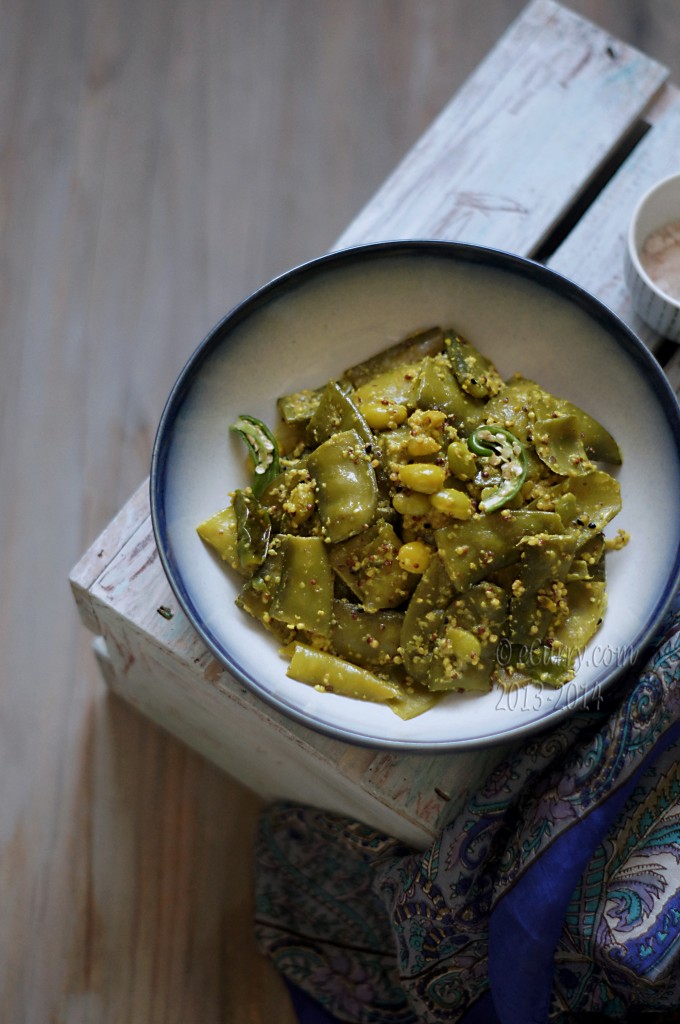
Hyacinth beans transports me back to my childhood – of a huge family garden that adorned the front of our home and of the beautiful deep purple pink flowers. They sparked up one corner of our lush green patch. The home that belonged to all of us, where we lived as a “joint family” – great grandparents, grandparents, uncles, aunts, cousins all of us under one roof.
The Sheem/Hyacinth beans that grew on that vine was the Makhon Sheem or Jack beans ( Conavalia ensiformis) – longer and broader and more tender than the regular hyacinth beans. The way I would love it was steamed with a drizzle of raw and pure mustard oil and salt.
The 2 storied house that had verandah with red floor, open porches, long hallways and the garden inhabit only in my memories now.
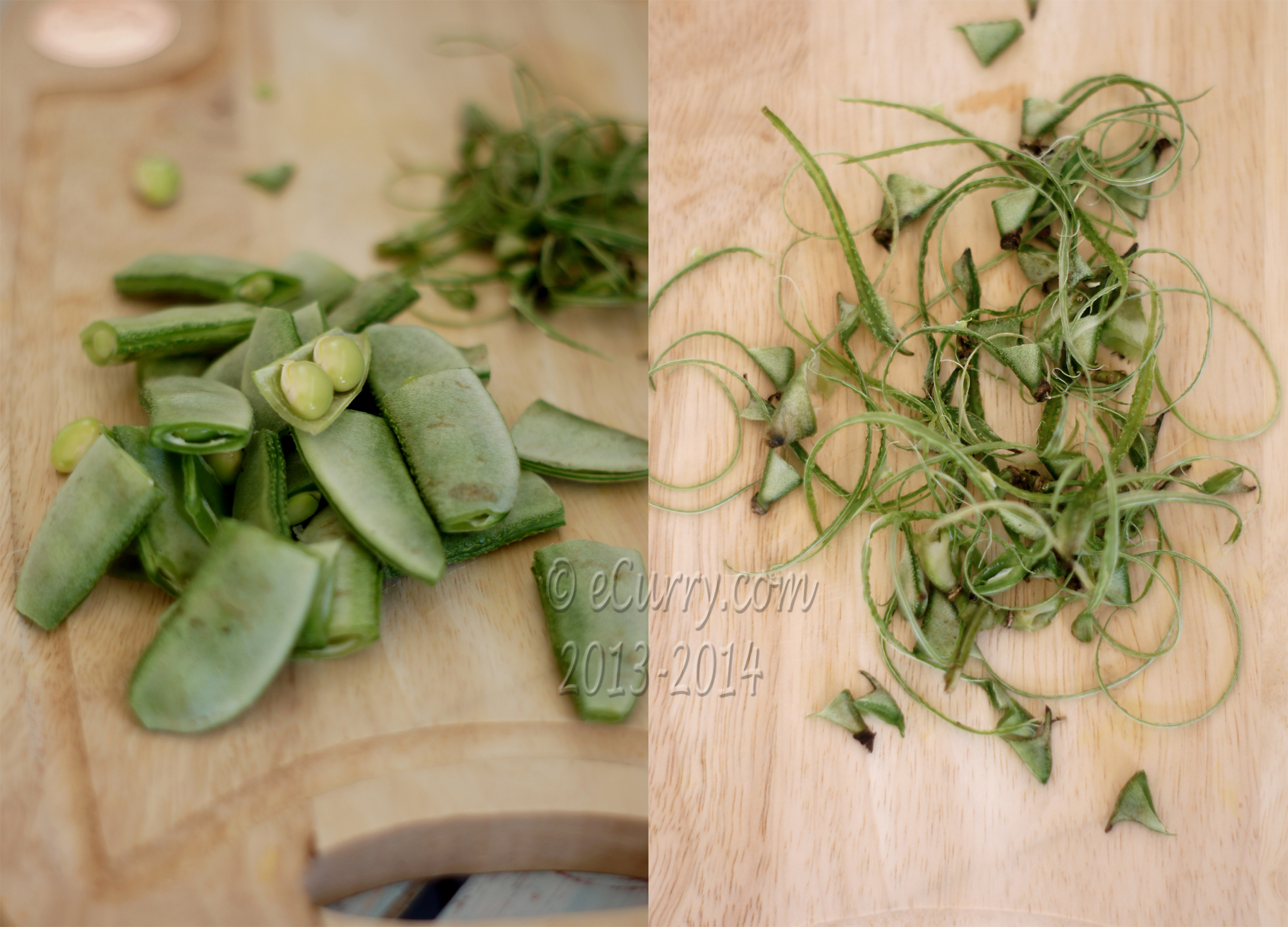
The huge jamrul/wax apple tree towered above the second story terrace, with the fruit laden branches leaning against the railing of one corner. Many hours were spent in that shaded corner with my cousins and friends as we satiated ourselves picking our fresh fruits and munching them down. Vines of an edible squash wrapped around the truck of the jamrul tree. While we stood there, we would try to spot the hanging squash between the thick cluster of leaves. All that remains of that tree is a dead stub.
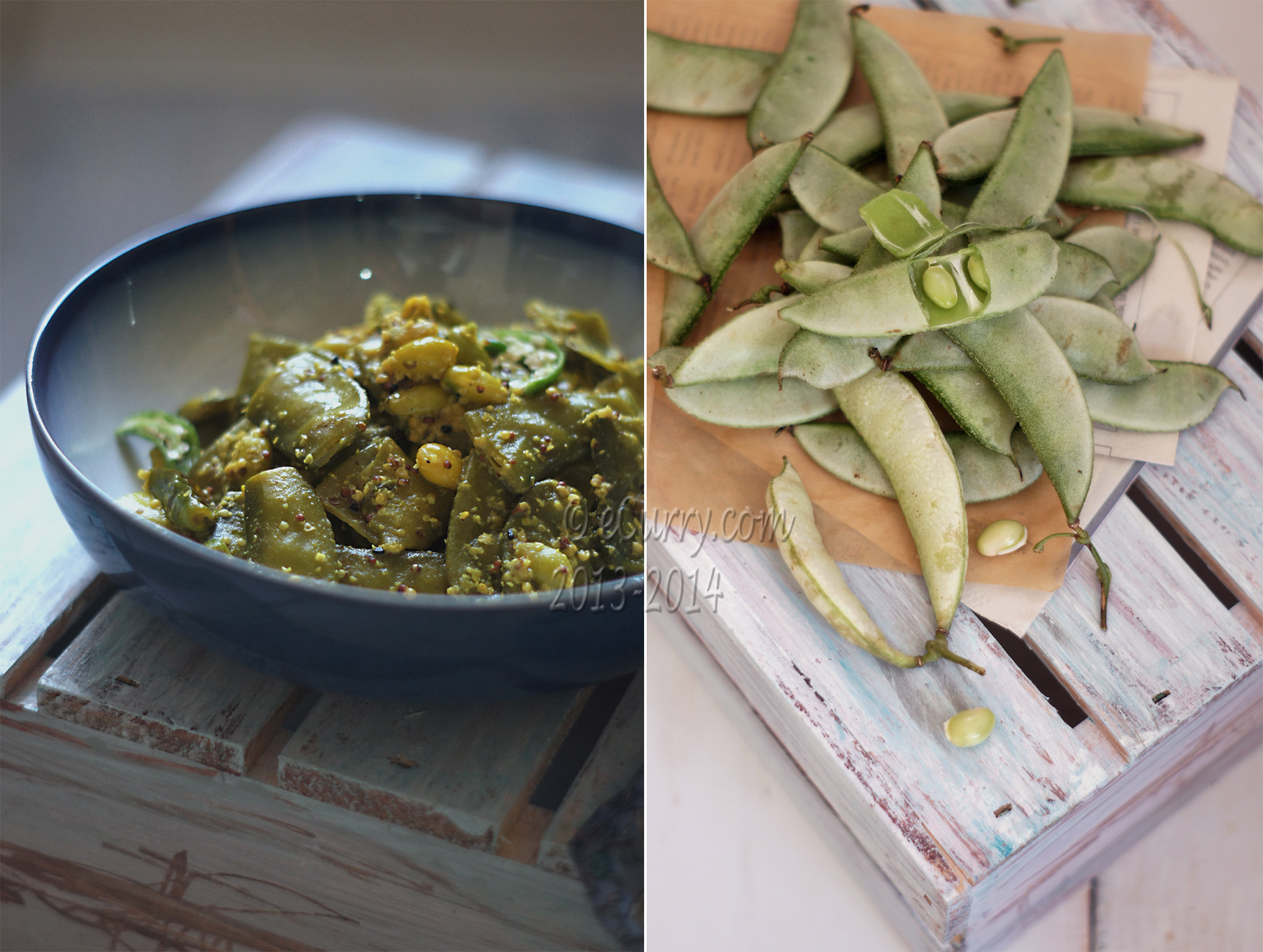
Then there was a lime tree – the very elusive Gondhoraj lebu. Fragrant fruits had the huge shrub bend over. The slices of lime added aroma to the masoor dal and rice during our meal time. The sublime aroma of this particular kind is quite similar the kaffir lime. The cow-shed was on one side of the garden. On another side, almost attached to the garden, was the kitchen.
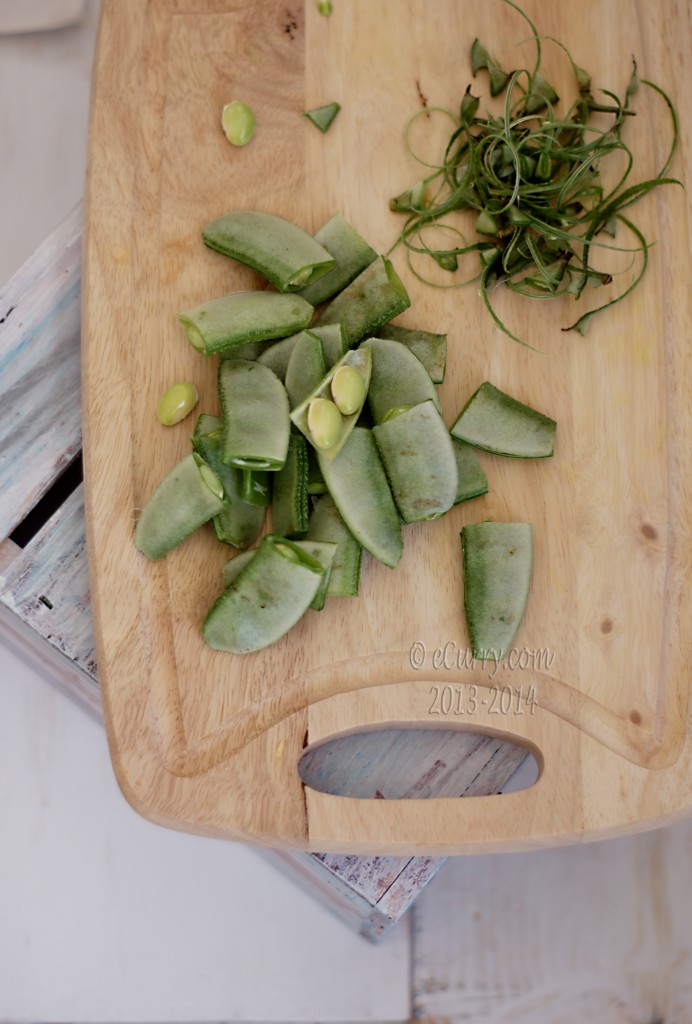
And there was the Hyacinth bean vine with deep pink flowers adding beauty to another corner of the garden. I do not remember what filled up the rest of the garden. More vegetables? Flowers?
Nothing remains of the above now, except in my fading memories. Each of the families moved out of the big house and built our own, in the surrounding property. The garden was gone, so was the cowshed. The cow grew old and passed away while it gave birth to a beautiful calf. And the rest is history. We moved out of the big house to our own when I was in middle school. Only a few meters away from where I spent quite a few years of my early childhood, but still with a lot of differences.
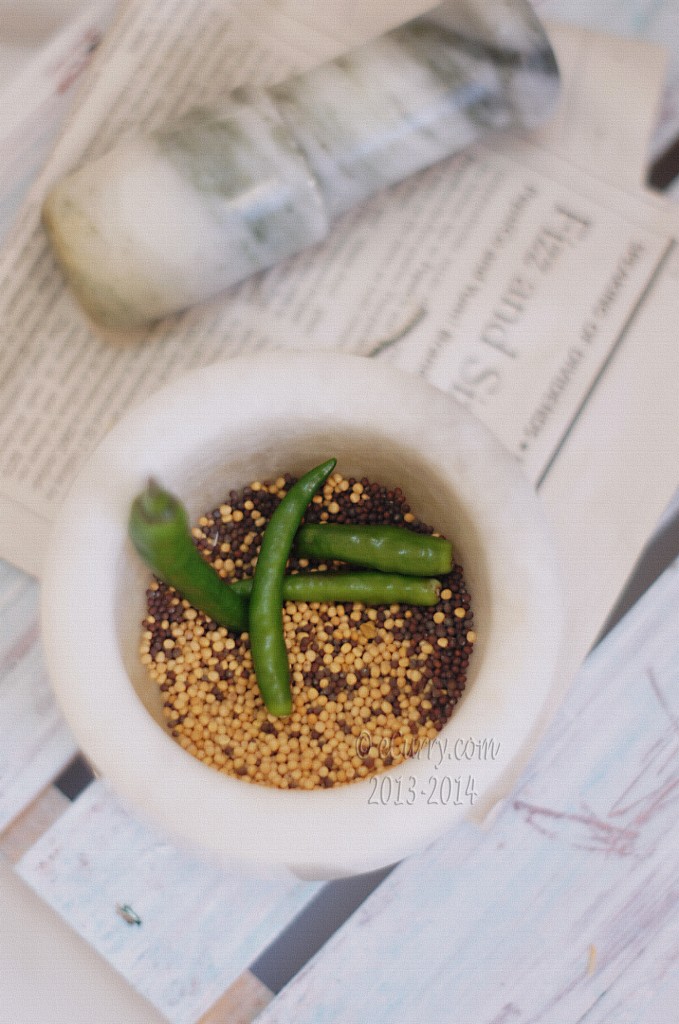
The beans I found this time were not as fresh as I would have wanted them to be. The recipe today is a very typical Bengali recipe, using the ubiquitous freshly made mustard and chili pepper paste; so very traditional to a Bengali kitchen. The dish is simple, homey and rich is flavors.
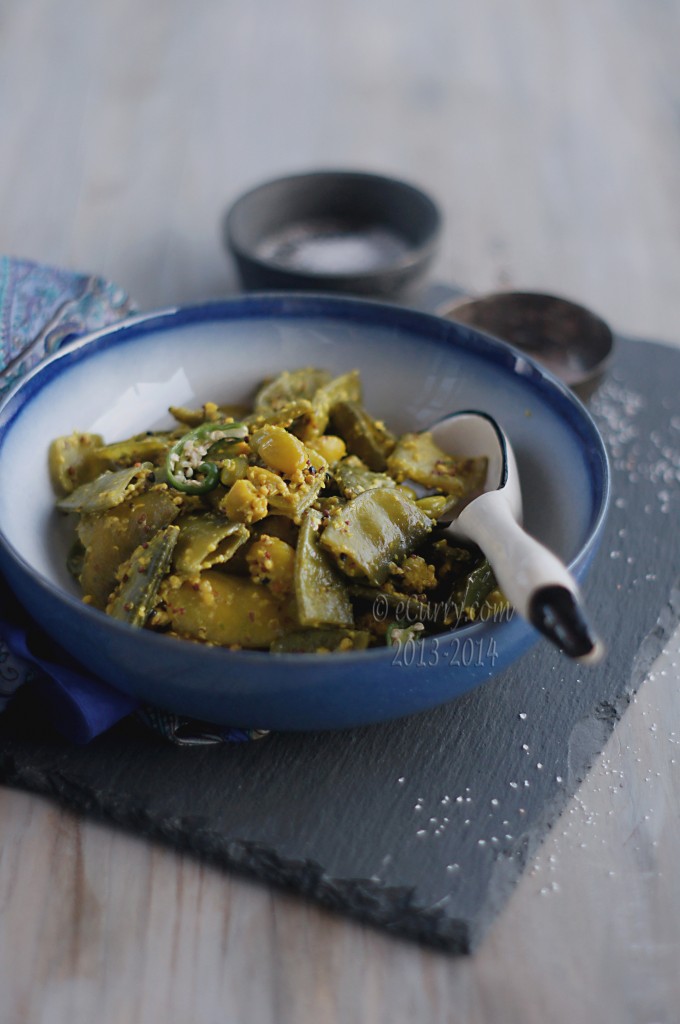
Shorshe Sheem: Hyacinth Beans cooked with Mustard Paste
Ingredients: (serves 3)
- 25- 30 hyacinth beans/sheem
- 2 tablespoon oil/pref. pure virgin mustard oil + a few drops/drizzle more
- scant 1/4 teaspoon kalonji/black nigella seeds
- 1-2 hot green chili peppers, like Thai-bird- slit
- 1/2 teaspoon turmeric powder
- salt to taste
- a pinch of sugar (about 1/6 teaspoon)
- mustard paste (recipe below) – adjust amount to taste. I used all of the paste that the recipe below makes
The Mustard Paste: (if you are new to using mustard paste in cooking, use less to begin with)
- 1 + 1/4 tablespoon yellow mustard + 3/4 tablespoon black mustard seeds
- 2 teaspoons white poppy seeds (optional – if you want a milder and creamier sauce)
- 3 or more hot green chili pepper (adjust to taste)
- a splash of water, just enough to make a paste
Method:
Slice the ends of each bean and pull out the fiber that runs along the spine/line of the bean. Chop the beans in two or 3 pieces each. Sprinkle some turmeric and some salt and partially cook the beans in a covered pan with a splash of water. Remove the beans from the pan. Most of the water should have evaporated. The beans might be partially cooked in the microwave too; add a splash of water and cook for 3-4 minutes in tightly covered container.
In the mean time make the paste with mustard seeds, poppy seeds (if you are using) and the chili peppers and as little water as possible. It should be a thick smooth paste.
Heat the oil to smoking hot in a pan or wok/kadhai. Now allow the heat to come down a little bit and add the kalonji/ nigella seeds and slit green chili peppers. Be careful, for the spice and the seeds of the chili pepper will sizzle and jump. Add the partially cooked beans, salt and turmeric. Cook the beans on low heat so the oil coats them, for about 5-7 minutes or until almost done.
Combine the mustard paste with water (about 1/2 cup or as much needed to get the beans cooked to tender. Add the mix to the beans and cook until the paste just about coats the beans and the oil starts to separate on the sides. The beans should be completely cooked through at this time. The mustard paste should coat the beans and there will be some extra sauce on the side – not runny, but thick in consistency.
Switch off the heat and drizzle a few drops of mustard oil and cover until ready to serve. Toss gently when serving.
Serve with hot steamed rice or with paratha/or roti/any flat bread.
Preparation Time: 15 minutes
Cooking Time: less than 30 minutes
Difficulty Level: Easy
Serves: 3
Related Posts:
- Spinach with Fried Garlic and Caramelized Onions
- Stir Fried “Pui” with Poppy Seeds
- Shorshe Maach/Fish in Mustard-Chili Sauce
- Shorshe Murgi: Chicken Cooked in a Zesty Mustard Sauce
- Stir Fried Green Beans and Potatoes with Coriander
- Stir Fried Ivy Gourd with Onion
- Green Beans Tomatoes and Almonds with Sumac
- Green Beans with Coconut
- Green Beans with Coriander
- Green Peas Stir Fry with Chaat Masala
- Cabbage with Peas and Potatoes – Bandhakopir Torkaari
- Cauliflower with Nigella (Kalonji)

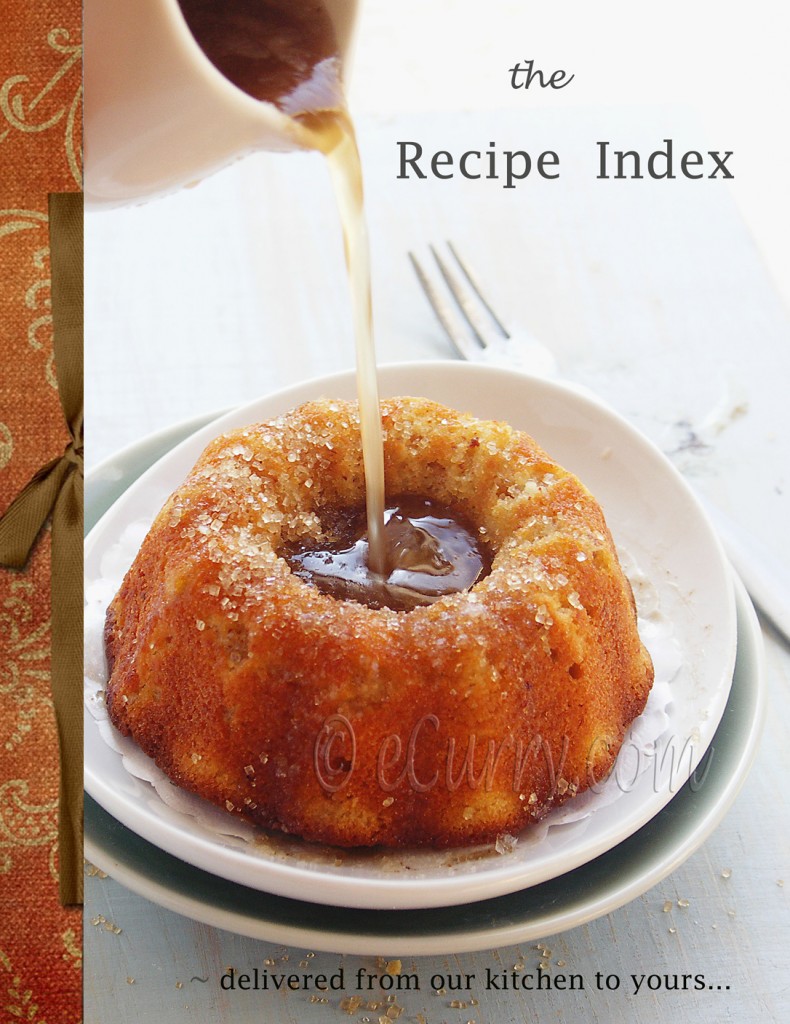
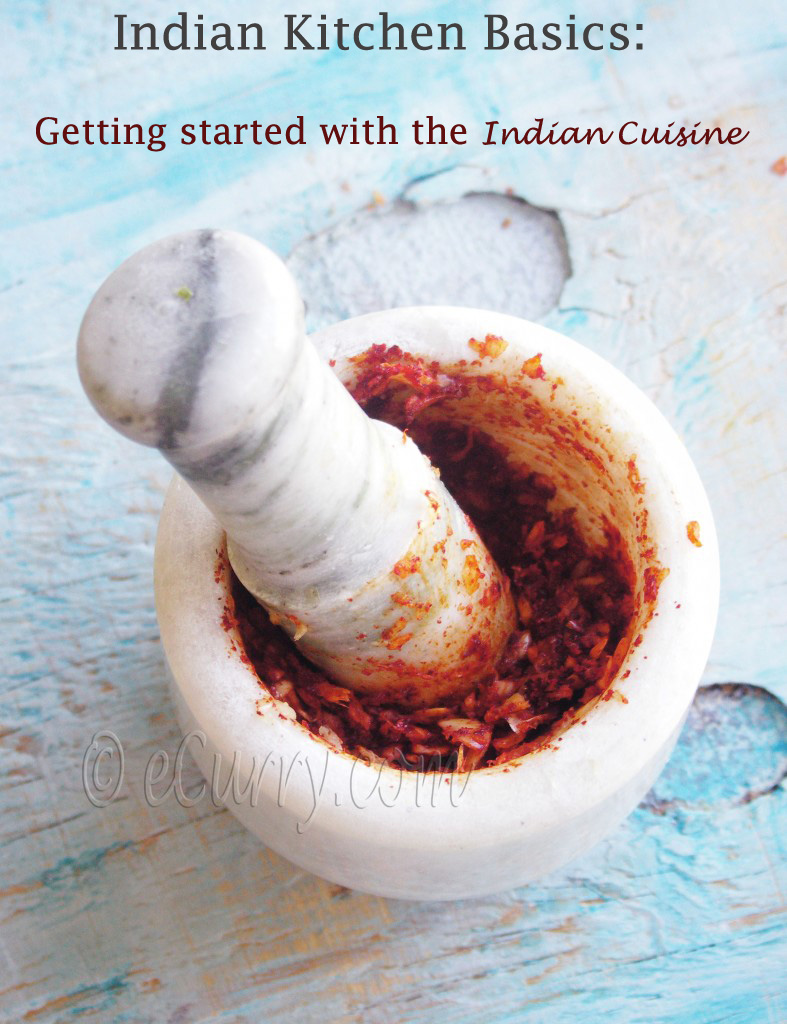
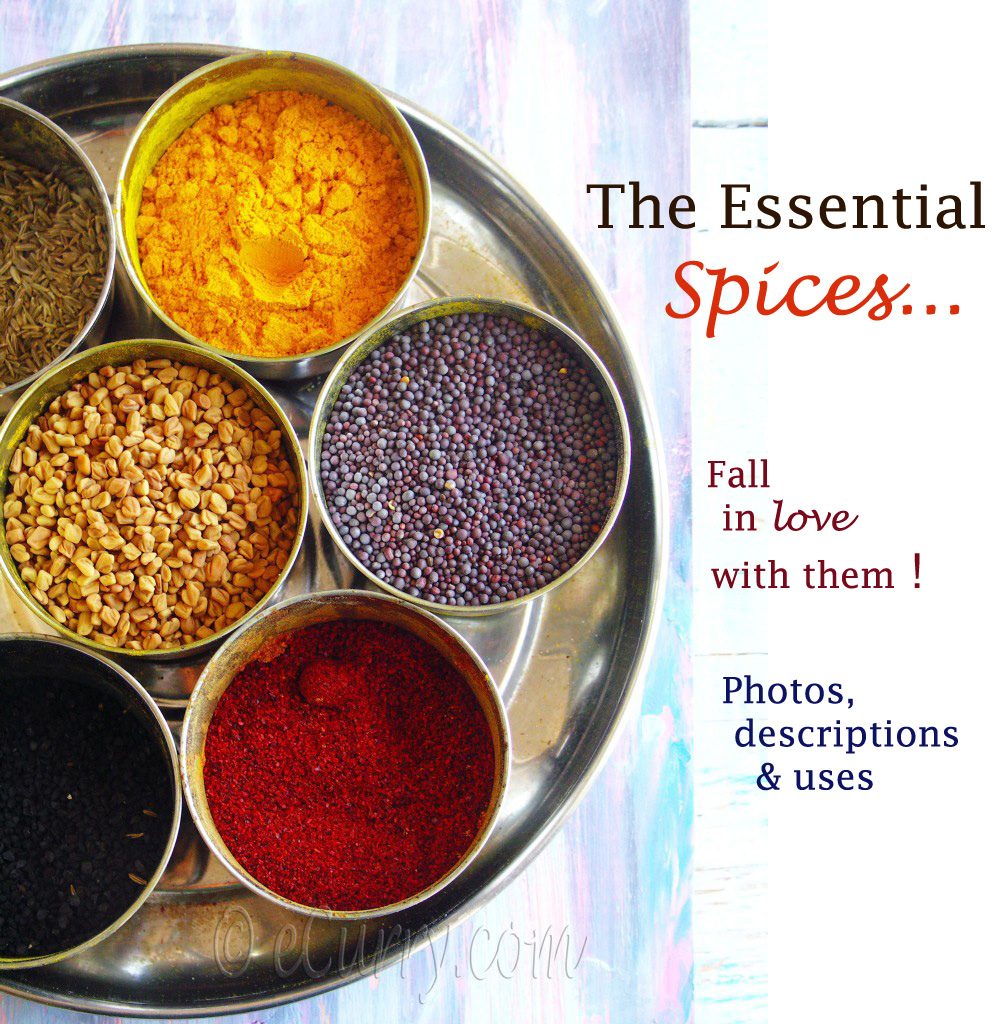



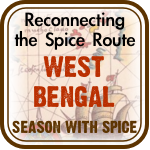




Great flavors! That dish must taste wonderful. The first picture is really beautiful.
Cheers,
Rosa
Great recipe soma. Loved the flavours that went into it 🙂
looks delicious
xx
Interesting recipe Soma.. Hyacinth beans are one of my absolute favorites!
Never imagined them with mustard chilli paste..
Radhika it is very common/popular way to cook these beans in Bengal 🙂
Great pics & great recipe!!!
Hi There,
Its a new dish for me and have never tried. It is looking so good with all the lovely pictures and write up as well. I have been here after a while but enjoyed scrolling through your rest of the wonderful recipes.
Have a wonderful week ahead. Thanks for sharing awesome recipes.
Best Regards, Sonia !!!
the mustard paste sounds like a wonderful addition to everyday veggies too! amazing photograhpy Soma.
Haven’t had Sheem for a long time. I love this mustard rendition of Sheem. With gorom bhaat:)
My mouth is watering!
I’ve gotta find hyacinth beans if it’s the
last
thing
I
do!
Beautiful, nostalgic post, reminding me of my own childhood. I never lived in a joint family, but visited my Dadur badi that was very similar. And this is the only way I like these beans.Beautiful post, even the pictures are moody.
I love sheem sedhdho with shorsher tel and knacha lonka. Haven’t had the Bengali sheem here in the US. I had the shorshe sheem made by maa very recently and loved every bit of it. I think it’s sheem week…Sandeepa from Bong Mom also made it. 🙂
Love your photos…
Sheem shorshe is so “real”…ektu gorom bhat pelei boshe pori khete!
😉
d
Reading your post now I am craving for light masoor dal with gondhoraj lebu… I am having very very basic food now a days as I don’t have proper kitchen here. Love this sheem preparation
I wanted a recipe with shim…..got way beyond that. Your writing is overwhelming me with nostalgia. Excellent post, both in terms of the cooking and the memoir.
What a beautiful piece of write up ! Awesome recipie